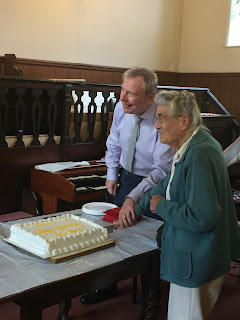Changes to Local History
The day, appropriately enough, began with a talk from Alan Crosby about how local history and local
Historical Societies have changed in the last 60 years. Below is a summary of the talk made from notes taken on the day.
We were reminded that we in St Helens Historical Society were and remain very fortunate to count Theo Barker and Gus Harris amongst our founder members, two individuals who contributed not only many works of local history, but also a new approach to the discipline itself. One example is the use they made of documents such as company and council records to provide details of how everyday life would have been lived on a local level in times past. This focus on people lower down the social scale marked a divergence from the practice of the Victorian County Histories. St Helens has never existed in a historical vacuum and the history of St Helens has always been linked to the history nearby cities such as Liverpool and to that of the surrounding towns and villages, but even if these industrial settlements might not be conventionally pleasing to the eye, they have their own stories to tell - yet the concept of "industrial history", so obvious to us today, took time to gain currency in academic circles.
Being founded in 1959, St Helens Historical Society came into being at a time when interest in local
history was about to experience significant growth. Over the previous decades, people had become
more educated, more literate - and gained more free time to pursue leisure interests. This co-incided
with a time of great change across wider society (as seen, for example, in the demolition of old buildings and the construction of motorways) and people were keen to avoid losing permanently those elements of heritage worth preserving. At the same time, the quantity of archive material increased and there was easier access to this material through the County Records Offices. The universities, growing both in size and in number, actively encouraged people to make good use of these archives through their Adult Education programmes. As local history grew in popularity both as an academic discipline and as a hobby, books and magazines on the subject multiplied; amongst these magazines is the "Local Historian", of which Mr Crosby is the editor. With no television and no Internet, it was natural that people would be more likely to attend public talks and meetings. In our days, the interest in local history persists, but local Historical Societies are not as strong as they once were and some have ceased to operate.
Like everything else in this world, subjects can go in and out of fashion. The 1950-s were the era of
housing and local medical statistics, whereas the 1990-s saw topics such as schooling gain more
currency. Major anniversaries draw people in and sometimes a particular group or topic may attract a
disproportionate degree of attention; one example would be conscientious objectors in the First World
War, who were only ever a tiny minority. By contrast, interest in physical public buildings is not what it was in the 1870-s, this despite the fact that public buildings are much easier to research than private
ones owing to the accessibility of archive material.
It is difficult to define where precisely history (including local history) begins and ends. In the 1950-s, the 1800-s were definitely history, but not so distant that all oral history had vanished or that documents were impenetrable. The 1900-s, by contrast, are perhaps not yet fully "history", but this will come. In any event, it can be worthwhile in a historical context to record and discuss even contemporary events.
Certain periods (such as the 1500-s) retain an enduring popularity, while others (such as the 1700-s)
never seem to be fashionable, perhaps due to how these periods are presented in the school
curriculum. It is to be remembered that historians always build on the work of previous historians, one instance being research into earlier centuries where records were often kept in Latin and are no longer accessible to the general reader unless they have been translated. Nor is the deciphering of old
handwriting a commonly-taught skill any more. By contrast, with the development of the Internet, it is now possible to browse through huge numbers of old newspapers without having to go through large quantities of physical paper, while with the invention of the digital spreadsheet, ordering lists by various combinations of criteria has been made feasible. Possible areas of study for the local historians of the future include motorway building and the replacement of town-centre shopping with retail parks.
As for local Historical Societies such as the one in St Helens, they too face both new challenges and new opportunities with the changing times. Publication of magazines and books has never been easier, but community education groups (with the notable exception of the U3A) are very much in decline. Social media provide a new avenue for publicity and while television programmes such as Time Team might not give the most accurate depiction of academic archaeology, they continue to draw audiences, as do programmes on topics such as family history.
Despite the wider availability of digital archives, physical documents will continue to be important for the foreseeable future; if nothing else, the digitisation process itself requires time and people and in many instances this process has only just begun. This may pose problems in the future as public libraries become fewer in number and access to undigitised documents becomes harder; once an archive has been dissipated, experience shows it can never be reconstructed. Local people with local knowledge meeting in local groups will remain invaluable.
*********************************************************************************
Informative, yet leaving the listener with much to ponder - overall, a very satisfactory first talk of the
day's celebrations!


